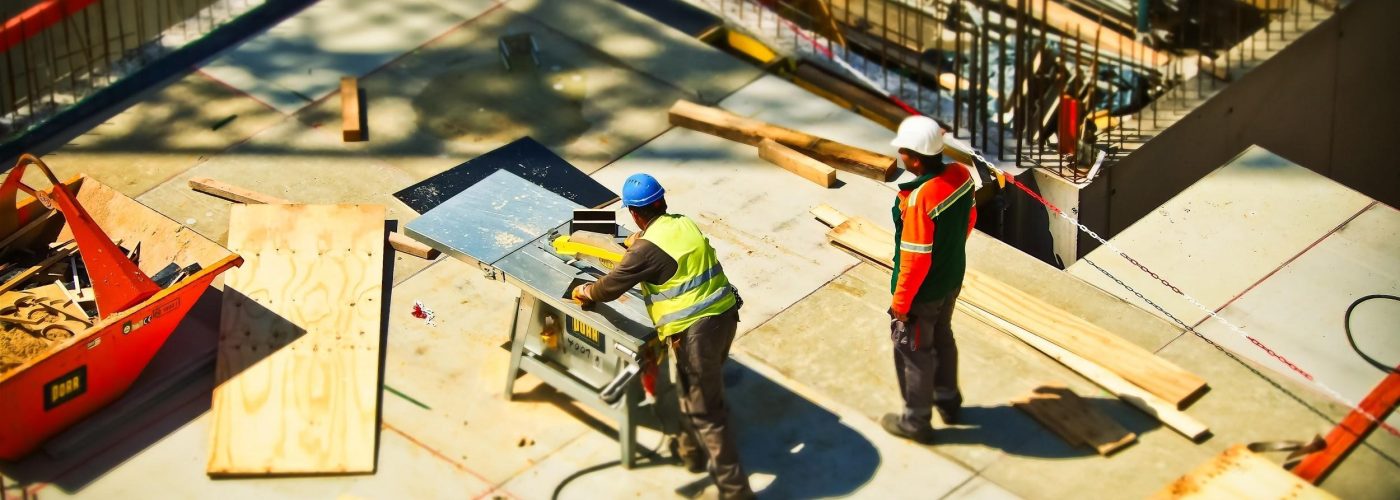Tilt-Up constructions allow the building to be more durable, but you need to know how it works, how long it has been used, and when not to use it.
Tilt-Up constructions have become a ubiquitous way of building these days. It uses concrete and Design-Build methods to make the whole structure more durable, sustainable, and efficient. Each year, about 650 million square feet of buildings are built by using tilt-up construction.
So, if you are building a new home, it would be wise to choose the tilt-up construction method. It will put up the building quicker than any other methods you can think of.
But to start the tilt-up construction, you need to know some basics like how it works, how effective it is, and what benefits you will receive.
The Working Process Of Tilt-Up Construction
First, a large structure is made from wood, rebar, and concrete. Later, that structure is carried to the construction site and acts as the building’s exterior wall. The concrete walls are tilted up into place by a crane or a pulley.
After preparing all the walls, they are then tilted into a position and act as the foundational footings. Each of these foundations is kept in place with large wooden pillars until a roof is placed on top of it and gives the whole structure a steady form.
Later, concrete is poured into the gaps and the connecting parts of the walls and the roof to make the whole building sturdy and durable. Tilt-Up construction companies are experts in creating retaining walls, and the famous company Fasttilt has its own unique wall, the fast retaining wall.
When Did Tilt-up Construction Become Popular
Although the method may seem new and advanced to some, this method has been used since the beginning of large construction projects. There was no crane back in those days, so they depended on pulleys or lever systems.
The method was popularized in the 1900s when large commercial buildings started using it and a popular magazine called “Concrete Construction” gave it the name Tilt-Up Construction. This became a modern method for building large constructions after World War Two.
That is because there were fewer people to work for construction, and people needed machines and techniques to create large buildings.
In the present day, with the help of computers and AI-based construction designs, Tilt-Up Construction has become more popular as it is now much safer, efficient, and less time-consuming compared to other construction methods.
How Good Is It Compared To Other Construction Methods?
We have talked about the popularity and the effectiveness of tilt-up construction, but how good is it? If we compare this to some other construction methods, we can get an idea of its effectiveness.
Here is a list of other construction methods and how tilt-up construction is better than them.
1. Wooden Frame Construction
A time-consuming method that is also labor-intensive. Although the initial building cost is low, the added cost of additional labor eliminates that benefit.
On the other hand, Tilt-up construction is less time-consuming and requires less labor.
2. Steel Beam Construction
This method is too costly, but sometimes, it is more durable than tilt-up constructions. The only time you should pick steel beam constructions is when you are constructing large high-rise buildings.
3. Prefabricated Steel Frame Construction
This is a cheaper method than tilt-up, but there are design limitations, and not many buildings can be constructed with this method.
By looking at these methods, we can see that these methods are extremely situational. On the other hand, tilt-up construction has a much better generalist use and can help with any situation. Therefore, Tilt-Up is a much better choice than these in most cases.
Major Benefits Of Tilt-Up Construction
Here are the significant benefits that make tilt-up construction so useful-
1. Cost-Effective
This method is extremely cost-effective compared to other construction methods. It saves money in requiring less labor and can be done with cheaper materials yet yields high durable buildings.
The main ingredients you need are concrete and rebar, which is very common compared to steel beams and other complex components.
2. Time Efficient
This method also saves a lot of time. The concrete panels that give the building structure can be made within two or three days at best.
As the concrete panels can ready the building’s structure faster, laborers can build the roof sooner, which will also be done more quickly. Last, setting up all the things can also be done in two days. This saves up a lot of time.
3. Saves Energy
The tilt-up method saves money and time and saves energy, and is considered much more environmentally friendly.
The walls are made of concrete and act as an excellent insulator, and it is possible to create walls with enhanced thermal properties.
When Should Tilt-up Construction Be Avoided?
Although Tilt-Up Construction seems like the best all-rounder method, it also has some flaws and sometimes falls behind other construction methods.
For example, you might not always want concrete structures. A barn or a warehouse can be built easily with the prefabricated steel method. It is also not effective if the building is far too big such as skyscrapers.
They are done better with steel beam methods because it would not lift the concrete panels that high up.
Each project differs from one another, and there are specific construction methods for these projects that outshine other construction methods. So it is best to consider the building type before choosing a construction method.
Final Thoughts
Although there are multiple construction choices, and each serves its own purpose, Tilt-Up can be a better overall construction method used in almost all cases. Hopefully, this article has shown you the benefits of this method, and for your next building project, you should definitely try tilt-up methods if it meets all your requirements.





